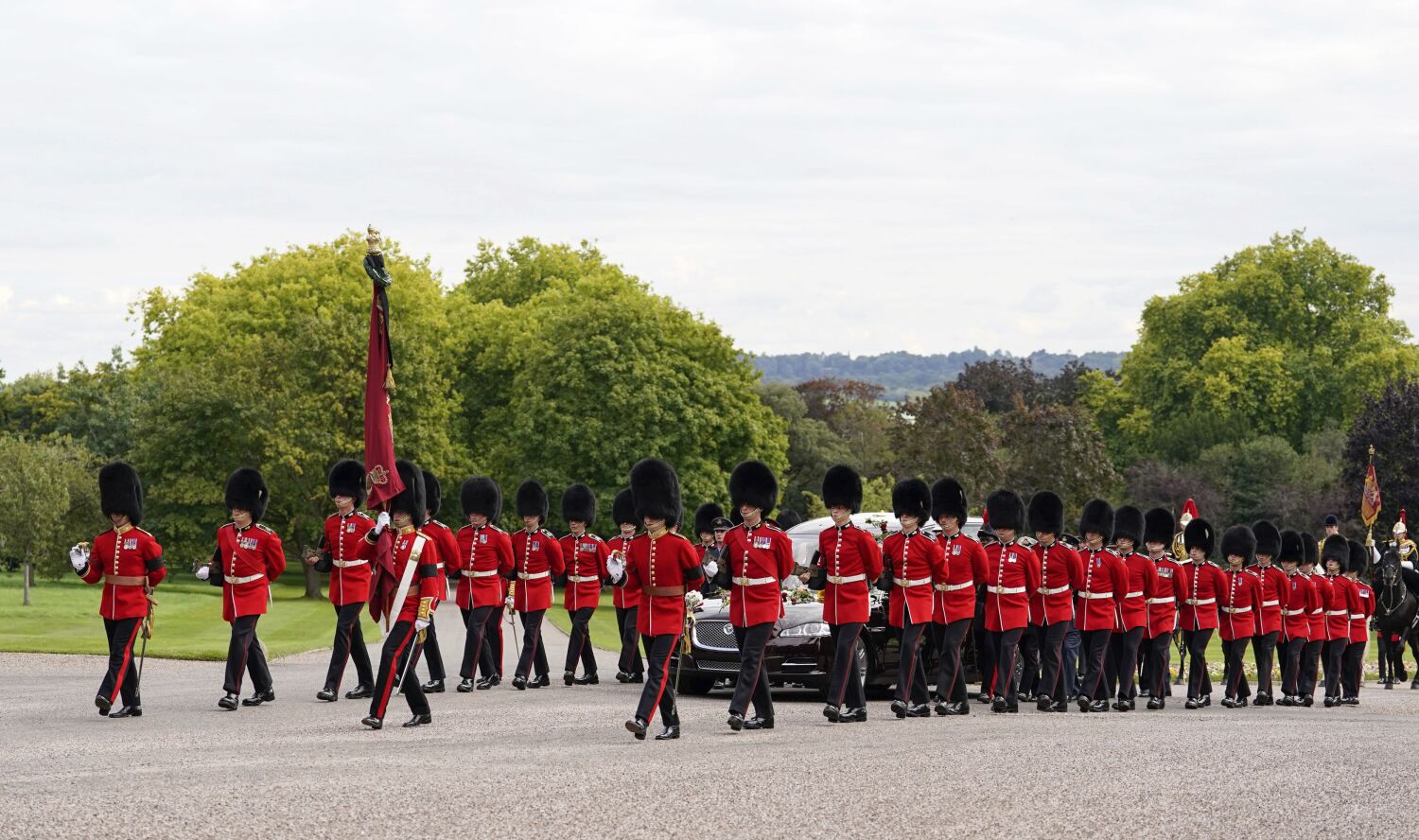Queen Elizabeth II state funeral: The 5 stand-out moments

Queen Elizabeth II’s state funeral Monday morning was an exercise in tradition, respect and national unity rarely seen in modern times. Here are some highlights, pulled largely from The Times’ real-time liveblog coverage of the farewell to the queen, who died Sept. 8.
The sounds
The largest bell at Westminster Abbey tolled in the note of D once a minute for 96 minutes, starting around 9:20 a.m. London time and marking each year of the queen’s 96-year life. The bell tolls whenever a member of the royal family dies and also when the dean of the abbey dies.
Later, Heathrow Airport suspended all flights for a half-hour so no air traffic noise disrupted the two minutes of silence at the end of the state funeral.
The people
Royalists or not, the hundreds of thousands of people who assembled in and around Buckingham Palace to witness the historic funeral behaved with utmost respect. “I wanted to be here to be part of history. I curtsied in front of her coffin,” 9-year-old Delainie White said, explaining that she felt it was important to be there to pay her respects.
Beyond coming to share in the day of national mourning and remembrance, the crowds in Hyde Park — between Kensington Palace and Buckingham Palace — were participating as much as possible in the funeral and surrounding rituals. When the congregation inside Westminster Abbey stood for the first hymn, the entire Hyde Park crowd rose up from their blankets and lawn chairs and remained standing until the hymn finished.
During the two minutes of silence at the conclusion of the funeral inside the abbey, a hush fell over the crowds in the park, where many stood with heads bowed, their faces solemn. No one moved.
The royal family and the funeral procession
Along with Charles III, Anne, Princess Royal; Prince Andrew, Duke of York; Prince Edward, Earl of Wessex; William, Prince of Wales; Prince Harry, Duke of Sussex; and Peter Phillips walked together. All but Andrew, Harry and Phillips were in military garb.
Amid the nonstop drumbeat of hundreds of feet walking together, bagpipes keened, striking an appropriately dignified tone. It was a show of tradition as the procession approached the castle, with the bright flag bedecking the late queen’s coffin standing out amid the more somber tones.
The funeral service
Patricia Scotland — a lawyer, member of the specially selected queen’s council and also secretary-general of the Commonwealth — did the first reading. Newly minted Prime Minister Liz Truss, whom Elizabeth met with just two days before her death, did the second.
Following the lead of the BBC, most U.S. networks went without commentary during the service. Archbishop of Canterbury Justin Welby ended his homily with the words “We will meet again.” After singing “God Save the Queen” for most of his life, Charles III remained silent as the just-revised national anthem was sung: “God Save the King.”
The casket
The queen’s casket was borne by eight pallbearers chosen from the Queen’s Company 1st Battalion Grenadier Guards, some of whom were summoned home from Iraq on the day of the queen’s death.
After the crown, orb and sceptre were removed from atop Elizabeth’s casket at the end of the funeral, the world witnessed the casket being lowered into St. George’s Chapel’s Royal Vault, joining Prince Philip’s casket.
Later Monday, the king and the other royal family members were to attend a burial service for the queen and for Philip, who died in April 2021. That will be at King George VI Memorial Chapel in Windsor Castle, where Elizabeth’s mother and father are also interred.
Times staff writers Christina Boyle, Nabih Bulos, Mary McNamara and Eli Stokols contributed to this report.